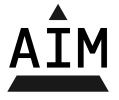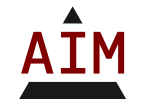
Table of Contents
The current era is of technology. It refers to all new innovations used for
betterment of society. So it is the demand that it should be used in education
also. By keeping this view, now it is shifting to education also to make
teaching-learning process more effective and efficient. Students’ learning can improve
with the help of instructional technology. Has instructional technology any effect on
students’ behaviour? How educational technology helpful for long-lasting learning?
etc. etc. These questions should be answered properly if we want to improve quality of
instruction and to achieve the objectives of education. 200 students of secondary classes
from arts and science streams were randomly selected from five Government Secondary
Schools of Wah Cantt. A self-developed questionnaire was prepared by analyzing
literature. t-test and product moment correlation method was applied for data analyses.
Results revealed that there is an impact of audio-visual aids on students’ behavior,
positive interaction between teachers and pupil is possible, learning will be quick and
creativity is possible. It keeps students attentive, students’ performance can be improved
and learning will be easy. Positive, quick and easy transfer of learning is possible which
has permanent impressions on the minds of the students. Positive interaction between
teachers, students and subject-matter and students’ creativity is enhanced due to
instructional aids.
Read More: http://isoss.net/downloads/Proc10thconf.pdf
Introduction
When it applies to educational setting, it is termed as educational
technology and when it is used for instruction, it is called as instructional technology.
ET has both general and specialized meanings. For the layman and
educators, it means use of audio-visual aids for instruction. Specialists who teach
ET as a subject prefer to use word “instructional technology” because
it is the practical use of ET in classroom for instruction. IT shows two aspects i.e. process and the particular devices that teachers employ
in classroom for the clarification and enhancement of concepts.
According to the Association for Educational Communications and Technology,
“Instructional technology is a complex, integrated process involving people, processes,
procedures, ideas, machines, devices and organization for analyzing problems and
devising, implementing, evaluating and managing solutions to the concerned problems in
those situations in which learning is purposive and controlled”.
However IT, ET, audio-visual aids, educational communication technology, audio-visual media, learning resources,
instructional or educational media are used interchangeably as they have same purpose
i.e. achievement of objectives and goals; and improvement in students’ behavior by
learning.
Read More: https://education.aim986.com/instructional-technology/
INSTRUCTIONAL TECHNOLOGY — WHY?
PSYCHOLOGICAL PERSPECTIVES
Cobun (1968) (as cited in Aggarwal, 1995) conducted a research in educational
technology and pointed out that:
1 per cent learning from sense of taste
1.5 per cent learning from sense of touch
3.5 per cent learning from sense of smell
11 per cent learning from sense of hearing
83 per cent learning from sense of sight
Cobun (1968) (as cited in Aggarwal, 1995) research showed that when sense
experiences are involved in learning, understanding becomes nearly constant and people
generally remember:
10 per cent when reading
20 per cent when hearing
30 per cent when seeing
50 per cent when hearing and seeing
70 per cent when saying
90 per cent when saying as they are doing
Instructional technology is only the tools who give the chance to students to actively
participate in learning. It has been recognized that when our various senses are involved
in any activity, reception of messages become increase.
INSTRUCTIONAL TECHNOLOGY AND STUDENTS BEHAVIOR
The main purpose of applying instructional technology in classroom is to maximize
the learning outcomes. Learning is the burning issue for all educational technologists but
the answer is still uncertain that how learning will be increased. Most of the researches
are based on comparative studies in which experimental groups teach with certain
instructional technology i.e. T.V., computer or any device and control groups take
instruction without them. At the end of experiment, researchers compare the performance
of experimental and control groups and difference attributes to the dependent variable.
Some researchers reviewed a lot of literature and come to the conclusion that
whatever instructional technology i.e. T.V., computer, charts, boards, maps, models etc.
is employed by the teachers, ultimately the students’ level of understanding will increase.
Both experimental and descriptive studies revealed that proper use of instructional
technology create positive interaction between students and students and teachers and
students. Possibility of quick learning, creative work and positive impact of teaching is
increased. They keep the students attentive and busy in classroom. With the help of them,
opportunities are offered to students to exchange their ideas with other class fellows.
Students’ performance is also improved by using them appropriately.


I am currently perfecting my thesis on gate.oi, and I found your article, thank you very much, your article gave me a lot of different ideas. But I have some questions, can you help me answer them?
Greetings
Yes, you can ask questions as many as you have regarding this article and also on thesis, if you want. My email address for correspondence is draamna.2021@gmail.com. I will surely answer you.
Thanks for contacting me.
Reading your article helped me a lot and I agree with you. But I still have some doubts, can you clarify for me? I’ll keep an eye out for your answers.
Very nice post. I just stumbled upon your blog and wanted to say that I’ve really enjoyed browsing your blog posts. In any case I’ll be subscribing to your feed and I hope you write again soon!
Can you be more specific about the content of your article? After reading it, I still have some doubts. Hope you can help me.
Can you be more specific about the content of your article? After reading it, I still have some doubts. Hope you can help me. https://accounts.binance.com/id/register-person?ref=S5H7X3LP
Thank you for your sharing. I am worried that I lack creative ideas. It is your article that makes me full of hope. Thank you. But, I have a question, can you help me? https://accounts.binance.com/zh-CN/register-person?ref=GJY4VW8W
Your article made me suddenly realize that I am writing a thesis on gate.io. After reading your article, I have a different way of thinking, thank you. However, I still have some doubts, can you help me? Thanks.
I am a website designer. Recently, I am designing a website template about gate.io. The boss’s requirements are very strange, which makes me very difficult. I have consulted many websites, and later I discovered your blog, which is the style I hope to need. thank you very much. Would you allow me to use your blog style as a reference? thank you!
Welcome. Thanks for comments. Yes you are allowed to use my Blog as a reference only. Remember that you are not allowed to use my own website content and blog. If you have any idea regarding this, then you are welcome to share it with me.
I may need your help. I tried many ways but couldn’t solve it, but after reading your article, I think you have a way to help me. I’m looking forward for your reply. Thanks.
Thanks for sharing. I read many of your blog posts, cool, your blog is very good. https://accounts.binance.com/ur/register-person?ref=RQUR4BEO
I don’t think the title of your article matches the content lol. Just kidding, mainly because I had some doubts after reading the article. https://www.binance.com/en/register?ref=P9L9FQKY
Your article gave me a lot of inspiration, I hope you can explain your point of view in more detail, because I have some doubts, thank you.
Your article gave me a lot of inspiration, I hope you can explain your point of view in more detail, because I have some doubts, thank you. 20bet
ทางเรา relxnowthailand.com ต้องขอบอกได้เลยว่า เป็นตัวแทนหลักอย่างเป็นทางการในไทย ที่ใหญ่ที่สุด
และเป็นเจ้าเดียวกับ RELX THAILAND สินค้าทุกแบรนด์ ทุกรุ่น เราได้ทำการคัดสรร บุหรี่ไฟฟ้า ที่เป็นหนึ่งในนวัตกรรม ช่วยเลิกบุหรี่ ที่มีประสิทธิดีเยี่ยม และช่วยได้จริง มาให้ลูกค้าได้เลือกใช้ Relx Infinity plus , Ks quik ,
Ks Kurve , Ks Kurtve lite , Kardinal Stick , ks ppod โดยสินค้าทุกชิ้นของเรา สั่งตรงจากโรงงาน
Thanks for sharing. I read many of your blog posts, cool, your blog is very good. https://accounts.binance.com/zh-TC/register-person?ref=W0BCQMF1
Thanks for sharing. I read many of your blog posts, cool, your blog is very good. https://accounts.binance.com/vi/register?ref=S5H7X3LP
Thanks for sharing. I read many of your blog posts, cool, your blog is very good. https://accounts.binance.com/bn/register-person?ref=53551167
Lots of people use their lotteries to improve money for useful initiatives that improve education, open public infrastructure and cultural services.
When the lottery will be played by you, you’re assisting to account these
programs when you fund your own ambitions of winning it big.
Have a great time and good luck!
Can you be more specific about the content of your article? After reading it, I still have some doubts. Hope you can help me. https://accounts.binance.com/en/register-person?ref=RQUR4BEO